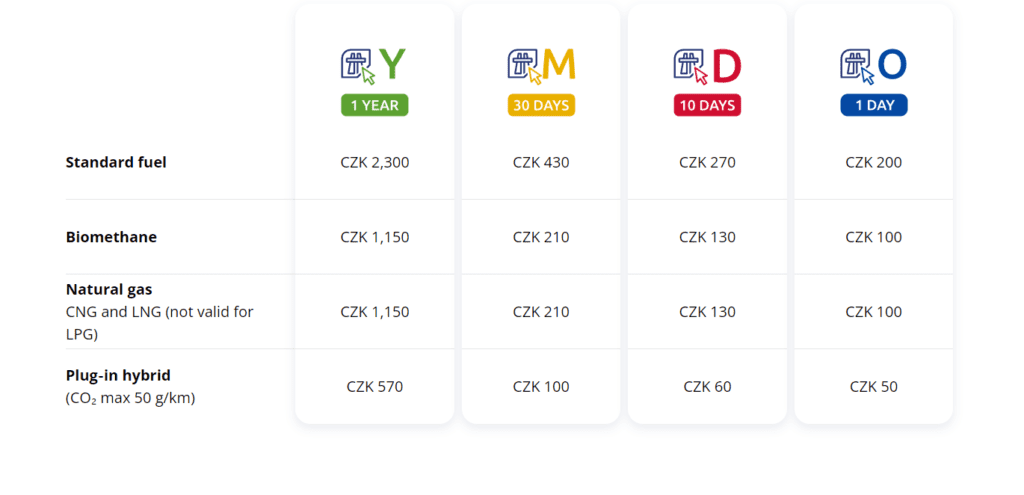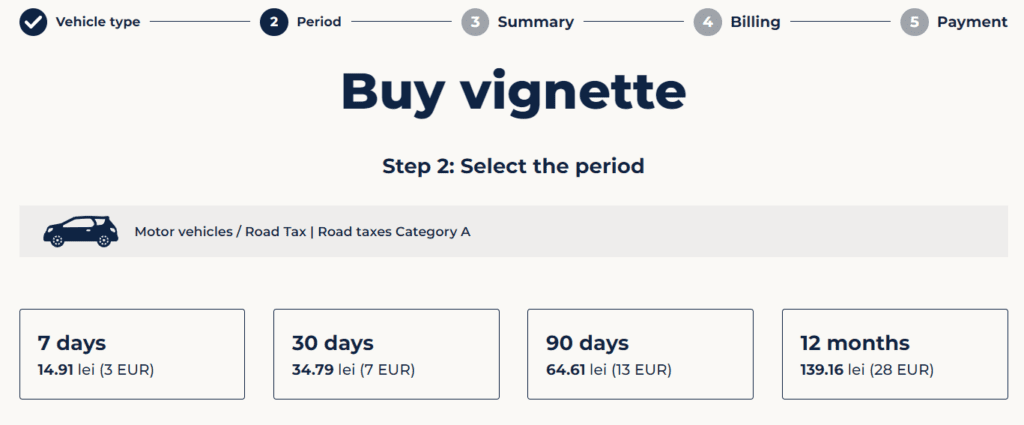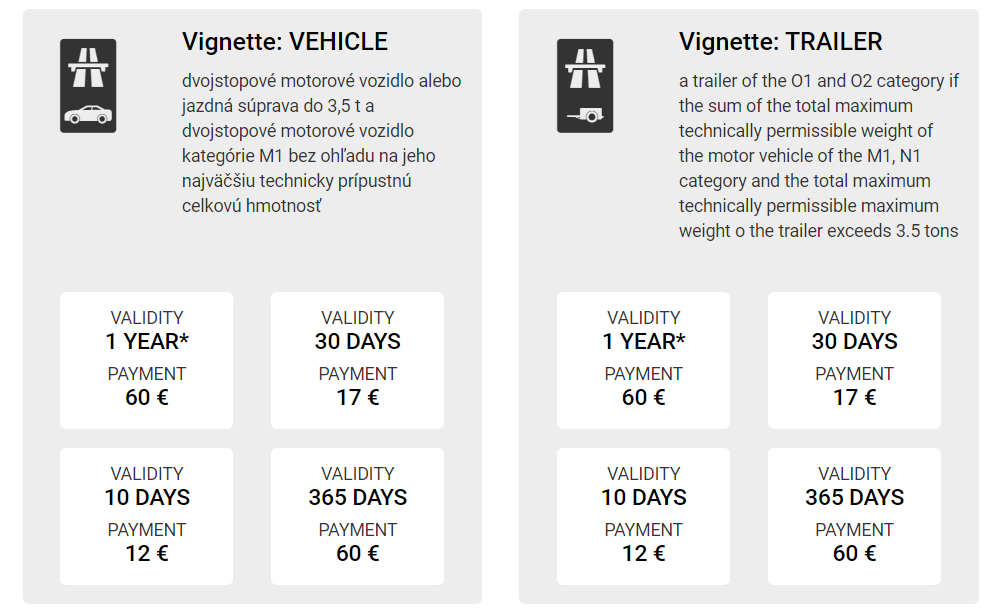What are Vignettes and Which Countries in Europe Require Them?
If you’re driving across Europe, it’s crucial to understand tolls and vignettes, as each country has different rules. Without proper preparation, you could face unnecessary fines or delays.
So, what is a vignette? Simply put, it’s a road tax sticker (or digital permit) required in certain countries to use highways. I had no idea what a vignette was when I moved to Europe in 2017—until a road trip from Poland to Croatia forced me to figure it out! Some vignettes are stickers for your windshield, while others are digital and linked to your license plate.
While researching, I realized there wasn’t a single, reliable source for vignette information—just endless tabs and scattered details. To save you the hassle, I’ve compiled everything you need in one place. Here’s your go-to guide for where to buy vignettes, which countries require them, and how to avoid fines—so you can focus on enjoying your road trip instead of stressing over logistics.
Need Other Travel Guides? Check out these Guides Below
- Driving in Italy: 5+ Important tips You Should Know
- Traveling by Train in Italy: Important Things You Should Know

What Are Vignettes
Planning a road trip in Europe? Some countries require a vignette—a highway toll sticker that must be displayed on your windshield to legally drive on toll roads. Unlike traditional tolls based on distance, vignettes operate on a time-based system.
Many countries offer digital vignettes online, while others still require physical stickers. If you’re renting a car, ask your rental company whether a vignette is included or if you’ll need to purchase one separately. Also, confirm which countries you’re allowed to drive in to avoid any fines or restrictions on your journey.
Vignette Costs and Validity: What You Need to Know
The cost of a vignette varies depending on the country, vehicle type, and duration. Most European countries that require vignettes offer multiple options, including short-term (10-day or weekly), monthly, and annual vignettes. Prices range from as little as €5 to over €100, depending on the country and the validity period.
For example:
- Austria: €9.90 for a 10-day vignette, €29 for a 2-month vignette, and €96.40 for an annual vignette.
- Switzerland: A flat fee of CHF 40 (€41) for an annual vignette, even if you only visit for a few days.
- Slovenia: A 7-day vignette costs €16, while a monthly vignette costs €32.
How Long is a Vignette Valid?
- Short-term vignettes: Typically valid for 7 to 10 days, making them ideal for tourists.
- Monthly vignettes: Valid for 30 days or an entire calendar month.
- Annual vignettes: Valid from January 1 to December 31, though some countries (like Austria) allow a rolling validity period of one year from the purchase date.
What Happens if You Don’t Have a Vignette?
Many European countries have automated ANPR (Automatic Number Plate Recognition) cameras and regular police checks to enforce vignette laws. If you’re caught driving without one:
- Fines can range from €80 to over €300, depending on the country.
- In Austria, you may be fined up to €240 if you don’t have a valid vignette.
- In Switzerland, the fine is a flat CHF 200 (€205) + the cost of a new vignette.
- Some countries may tow your vehicle if you repeatedly violate toll regulations.

How to Properly Display a Physical Vignette
If you’re traveling in a country that still uses physical vignettes (like Switzerland or the Czech Republic), it’s essential to affix them correctly to avoid fines.
Where Should You Place Your Vignette?
- Austria, Switzerland, Slovenia: The upper left corner of the windshield or behind the rearview mirror.
- Hungary, Czech Republic, Slovakia: No physical sticker is needed—these countries use an electronic vignette (e-vignette) linked to your license plate number.
What Happens if You Forget to Display It Correctly?
- Some countries will consider the vignette invalid if it’s not affixed properly, resulting in fines.
- Avoid using tape or temporary adhesives—the vignette must be directly stuck to the windshield.
- If you rent a car, confirm with the rental agency whether a vignette is included and properly placed before you drive off.
Which Countries Require Vignettes
As of July 2nd, 2024:
- Austria
- Bulgaria
- Slovenia
- Czechia
- Hungary
- Moldova
- Romania
- Switzerland.
How do I buy a Vignette?
Typically, you can purchase a vignette at the last gas station before entering a new country. For example, when traveling to Austria from my home in Italy, I make a stop outside Bressanone/Brixen to get my vignette. Many countries have also adopted online platforms, allowing you to buy your vignette before your trip. I’ve used these online services for our journeys to Austria and Croatia. It’s an easy and foolproof method. Below, you’ll find a list of countries in alphabetical order, along with details on where to purchase your vignette.
Austria
If you’re planning a road trip through Austria, you’ll need a motorway toll vignette to legally drive on its highways. Available as a 10-day (€11.50), 2-month (€28.90), or annual pass (€96.40), the Austrian vignette can be purchased at gas stations, post offices, and online via ASFINAG. Be sure to affix the sticker to your windshield or register for the digital e-vignette, which is linked to your license plate.
Website: Vignette-Austria’s Motorway Toll Sticker | All Necessary Information or ASFINAG
- One-year toll sticker: € 96.40
- Two-month toll sticker: € 28.90
- Ten-day toll sticker: € 11.50
Bulgaria
Driving in Bulgaria requires an electronic vignette (e-vignette) for all motorways and major roads. The vignette pricing varies based on duration:
Website: Electronic Vignettes for Bulgaria
- (7 Days)€15.95
- (1 Month)€22.95
- (90 Days)€35
- (1 Year)€59
Czechia
In Czechia, vignette prices depend on your vehicle’s eco-fuel classification. The standard vignette options include 10-day, 30-day, and annual passes. Starting in July 2024, updated pricing will apply, so check the official website before purchasing. Czechia uses a digital e-vignette system, eliminating the need for a physical sticker.
You can visit their website here: Czechia Vignettes

Hungary
Hungary requires an e-vignette (matrica) for using its motorways. Unlike traditional stickers, this system is fully digital and linked to your license plate number. Prices vary based on vehicle category and duration, with options for weekly, monthly, and annual vignettes. Purchase your Hungarian vignette online or at designated sales points before entering toll roads.
Website: E-Vignette Purchase Hungary

Moldova
Moldova requires a vinieta (vignette) for foreign vehicles, with different pricing based on duration:
- 7 Days: €4
- 15 Days: €8
- 30 Days: €16
- 90 Days: €45
- 180 Days: €85
🔴 Important: Moldova advises travelers not to pay between 23:45 and 00:01 due to system updates. You can purchase a vignette online or at border crossings.
Website: Vinieta
Romania
Romania requires a rovinieta (road toll vignette) for all vehicles using national roads. Additionally, travelers using the A2 Bucharest-Constanta (Sun Highway) must pay a separate bridge toll at the Fetesti-Cernavoda station.
Vignettes are available for daily, weekly, monthly, and annual use and can be purchased online or at gas stations. Ensure you have both the road vignette and bridge vignette before driving.
🔗 Official Website: Rovinieta Online
Website: Rovinieta Online

Slovakia
Slovakia: Where to Buy Vignettes
Slovakia uses an electronic vignette system (e-známka) for vehicles under 3.5 tons. One of the best features of Slovakia’s system is its detailed list of sales points, making it easy for travelers to find vignettes at gas stations, post offices, and border checkpoints if they don’t want to buy online.
Website: Eznamka

Slovenia
When driving in Slovenia, purchasing an e-vignette is mandatory for all motorways and expressways. Options include weekly, monthly, and annual e-vignettes. You can buy them at gas stations, post offices, and DARS (Slovenian Motorway Company) offices, as well as at outlets near the Slovenian border in neighboring countries.

Switzerland
Switzerland requires all motor vehicles, including cars, motorcycles, and trailers, to have a vignette when driving on motorways and national roads (marked with a white motorway symbol on green signs). Unlike other countries, Switzerland offers only a single vignette option that is valid for one year.
- Vignette Cost (2024): CHF 40 (€42)
- Validity: January 1st to December 31st (the same vignette covers you for the entire calendar year)
- Website: Swiss Vignette – Official
Where to Buy a Switzerland Vignette?
- Online: The new e-vignette (introduced in 2023) can be purchased online and linked to your vehicle’s registration number.
- Physical Sticker: If you prefer the traditional sticker, it’s available at gas stations, post offices, customs offices, and border crossings.
Fines & Additional Fees
- Driving Without a Vignette: CHF 200 (€210) fine plus the cost of purchasing a vignette.
- Got a Rental Car? Most Swiss rental vehicles already have a vignette, but always double-check before driving on toll roads.
Extra Toll Roads in Switzerland
Unlike most vignette systems, Switzerland also has additional tolls for specific tunnels and mountain passes:
Great St. Bernard and Lötschberg Car Trains: Pricing varies depending on the route
Grand St. Bernard Tunnel: CHF 29 (€31) one way
Munt La Schera Tunnel: CHF 16 (€17) one way
Common Mistakes Travelers Make with Vignettes (And How to Avoid Them!)
1. Assuming Your Rental Car Comes with a Vignette
Many travelers incorrectly assume that their rental car includes a valid vignette. Some rental agencies do provide them, but others charge extra fees or require you to purchase one yourself. Always ask before you rent.
2. Not Activating a Digital Vignette in Time
Countries like Hungary, Slovakia, and Romania now use digital vignettes (e-vignettes) instead of stickers. However, some require you to activate them before entering the toll road system.
- Example: In Hungary, if you buy an e-vignette at a gas station, you must activate it before driving on the highway.
3. Not Keeping a Receipt or Proof of Purchase
For digital vignettes, always keep a confirmation email or receipt. Some countries allow police officers to check electronically, but in case of errors, having a receipt can prevent disputes and fines.
4. Overlooking Border Requirements
If you’re road-tripping through multiple countries, check if each country requires a vignette before crossing the border. Some do not sell vignettes at border checkpoints, meaning you’ll need to buy one online in advance or stop at a gas station before entering the country.
5. Confusing Vignettes with Toll Roads
Not all countries with toll roads use vignettes. Some (like France, Italy, and Spain) charge based on distance traveled, meaning you’ll pay at toll booths instead of buying a vignette.
6. Do I need a vignette for motorcycles?
- Some countries require them (e.g., Austria, Slovakia), while others exempt motorcycles.
7. What happens if I accidentally enter a vignette zone without one?
- Many countries use automatic cameras to detect vehicles without vignettes. Fines are sent by mail and must be paid quickly to avoid additional penalties.
8. Are there exemptions?
- Some local vehicles, military, and diplomatic cars may be exempt, but travelers generally must comply.
Final Thoughts: Do You Need a Vignette for Your Trip?
If you’re planning a road trip through Europe, a vignette is a crucial requirement in many countries. Check the specific rules for each country you’ll drive through, purchase your vignette in advance when possible, and ensure it’s properly displayed or activated.
By understanding vignette rules and avoiding common mistakes, you can enjoy a smooth and fine-free driving experience on Europe’s highways!






Great one stop shop for vignettes through Europe. Thanks for the work?